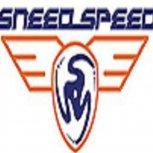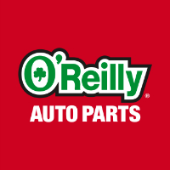-
Welcome to Auto Parts Forum
Whether you are a veteran automotive parts guru or just someone looking for some quick auto parts advice, register today and start a new topic in our forum. Registration is free and you can even sign up with social network platforms such as Facebook, X, and LinkedIn.
-
Similar Content
-
- 0 replies
- 1,076 views
-
- 0 replies
- 1,793 views
-
- 2 replies
- 1,870 views
-
- 2 replies
- 1,618 views
-
- 4 replies
- 2,100 views
-
-
Similar Topics
-
By OReilly Auto Parts
Automotive Shock and Strut Overview | What do they do and why are they important?
-
By Counterman
What appears as one of the most basic tools in your custgomers’ tool box or in your tool corral is far from it. Screwdrivers come in many shapes and sizes, and they are not created equal. The differences in design and manufacturing can add up to a valuable tool you own for life, or one that just takes up space.
link hidden, please login to view This downloadable document features a collection of “screwdriver tips,” including the most common types, things to consider when buying them and ways to get the most out of your tools.
The post
link hidden, please login to view appeared first on link hidden, please login to view.
link hidden, please login to view 
-
By Counterman
It’s been estimated that fraudulent warranty claims cost auto parts stores $600 million every year.
Those costs stem from a number of expenses that are set in motion by a return, including manually processing credits; reverse logistics and transportation; repackaging products; and additional quality-control testing to rule out major defects in materials.
The “Check the Part” campaign estimates that more than 50% of warranty returns are either brand-new or not the manufacturer’s product – which suggests that many parts professionals aren’t even looking at the item that’s being returned.
Endorsed by MEMA Aftermarket Suppliers and the Auto Care Association, the campaign encourages parts professionals to follow a simple three-step process when processing warranty returns:
Open the box. Inspect the part. Verify the return. Recently, Dorman Products published a return guide for CV-joint kits.
If a customer wants to return a CV-joint kit, Dorman offers these three tips to help to determine if it’s a valid warranty claim:
Open the box and make sure the correct part is in the box. Some customers may try to return unrelated products and heavy objects as a scam. Dorman parts will be laser-etched with the part number as shown. OEM parts or parts from other manufacturers are not valid returns. Some joints come lubricated from the factory. Others have grease supplied. Grease must be installed in all cases. No joint can last without lubricant! Verify grease was present – the unit should be pretty messy when returned. If you see rust, blue discoloration or distorted components, it’s likely the joint had too little grease and thus is ineligible to be returned. Please share examples of ineligible returns on link hidden, please login to view. You can download a PDF of the return guide below:
link hidden, please login to view link hidden, please login to view The post
link hidden, please login to view appeared first on link hidden, please login to view.
link hidden, please login to view







Recommended Posts
Join the conversation
You can post now and register later. If you have an account, sign in now to post with your account.
Note: Your post will require moderator approval before it will be visible.